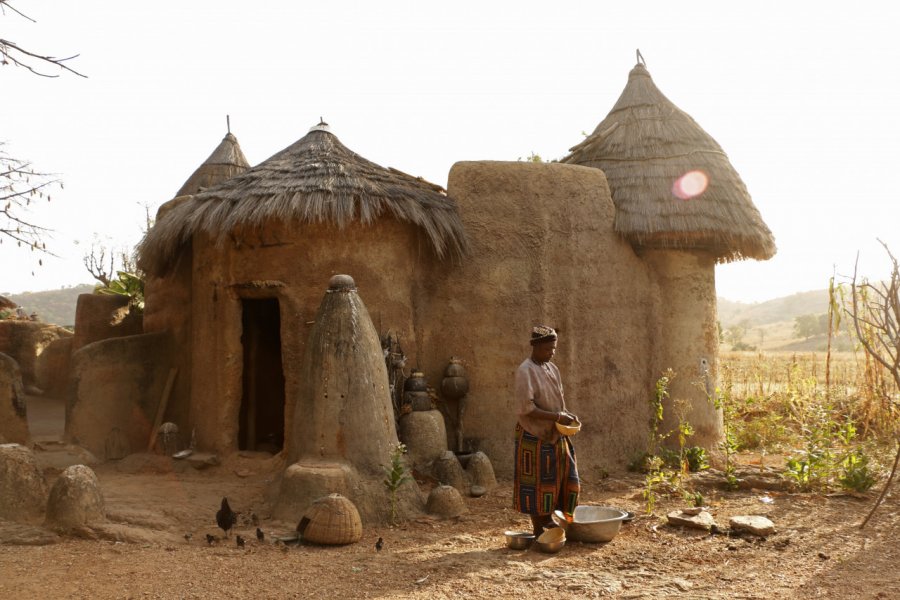Travel Guide Boukoumbé
Find an accommodation
Advertising
Here, in the heart of Somba Country, one is either a farmer or a hunter. And the women work as much as the men. Somba is the generic name used in the past by the colonial administration to designate the inhabitants who lived in the mountainous region of Atacora. They are people of diverse origins. In particular the Betammaribé (Otammari in the singular), who created an extremely original form of habitat: the tata sombaThis is a fortress farm with two floors, which can be seen from Tanguiéta to the vicinity of Perma, in the south, with a very clear area of dispersion towards the west and Togo (Tamberma country). These dwellings have a social, economic and defensive dimension. Indeed, each house (or tata) constitutes an autonomous economic entity, with its own plot of land around it, constantly fertilized by animal manure.On this plot of land is the domestic vegetable garden and the tobacco or white millet nursery, the plants of which will later be transplanted to the community's own fields, generally located in the high bush and where fallowing is practiced. In this way, due to the scarcity of arable land, a social solidarity has been established within the community that shares common fields. The need for space for the development of the individual plot and the raising of domestic animals, combined with the need to guarantee family privacy, in the absence of artificial fences, has produced this dispersed mode of settlement.The tata serves as a dwelling for the family, a support for grain silos, a shelter for domestic animals, a defensive citadel in case of attacks (once common in the region) and a sanctuary for the clan. The construction technique of a tata is quite complex. The walls are made of banco, obtained by mixing clay with water. They are covered with a plaster of clay mixed with cow dung, which is dried and then sprinkled with a decoction of shea nuts and néré fruit bark. The granaries are built with fonio stalks and pieces of termite mounds. The roofs of the granaries are made of straw, while the terraces are made of wooden crosspieces on which are tied lianas that are then covered with banco. Each dwelling is distinguished from the others by decorative notches, similar to scarifications, carved on its façade, and has its family fetish that watches over the entrance. Nowadays, this type of housing tends to disappear, due to the complexity of its construction and the long months of work it requires. Many people now prefer the round hut. All the more reason to go to Somba Country to discover this traditional habitat. Or even to request a receptive agency to be able to sleep there
Suggested addresses Boukoumbé
Weather at the moment
Advertising
Organize your trip with our partners Boukoumbé
Transportation
Book your plane tickets
Car Rental
Boat rental
Accommodation & stays
Find a hotel
Holiday rental
Find your campsite
Tailor-made trip
Immersion travel
Services / On site
Activities & visits
Find a doctor





